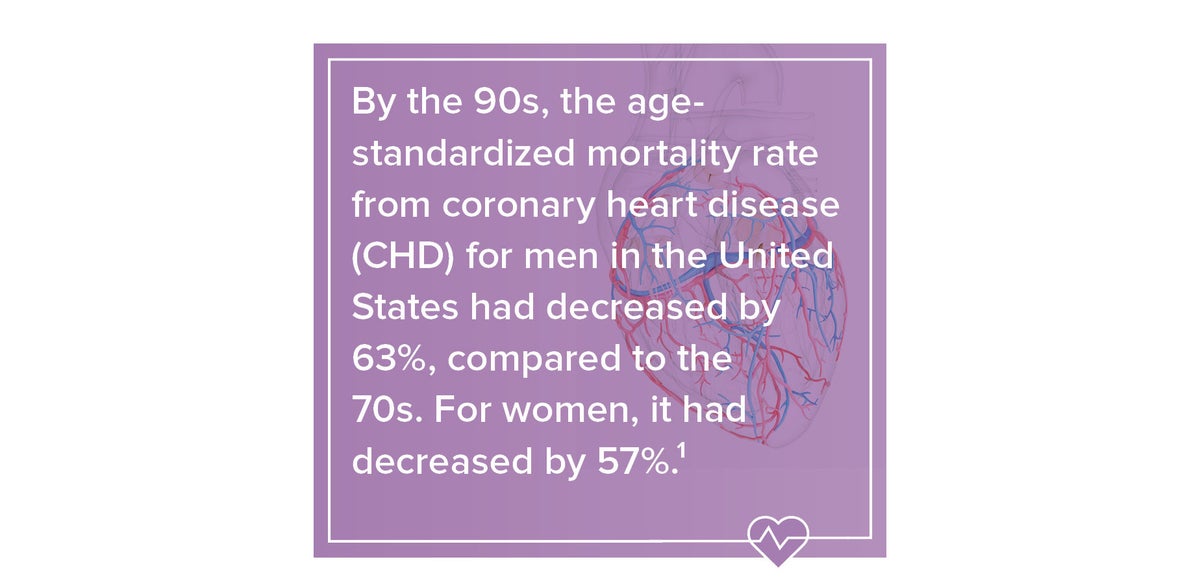A Short Primer on Cardioplegia Solution
The American Heart Month Issue

With heart stopping productions like Jaws, Halloween, and Carrie, it’s a wonder that any of us survived movies in the 70s. Perhaps we were less affected back then because we had other risks to worry about. By the 90s, the age-standardized mortality rate from coronary heart disease (CHD) for men in the United States had decreased by 63%, compared to the 70s. For women, it decreased by 57%.1 Death due to heart disease was far more frequent in the days of Jaws.
Today, CHD is far less deadly because of changes in physical activity and smoking habits, and because of pharmaceutical agents like thrombolytics, aspirin, β blockers, and ACE inhibitors.¹ It's inspiring that pharmacy is well associated with drug therapies that have helped transform CHD over the course of a few decades. But at the same time, it's a little disheartening that few are as familiar with cardioplegia, a pharmacy- compounded solution that has enabled the surgical repair of so many patients' hearts.
We suspect that one’s understanding of cardioplegia may be obstructed by the unfamiliar ingredients and the strange sounding formulation names. Therefore, to help relieve some confusion, we've prepared this short primer on cardioplegia solution which can be a resource for those involved in cardiac care.
The Need for a Motionless Surgical Field During Heart Surgery
Surgeons repairing aortic aneurysms, leaky valves, and other types of defects often require a temporary stoppage of the beating heart with protection of the heart tissue during the surgical procedure. Cardioplegia solutions do both. They start with heart paralysis, but they also provide “cardio-protection” during infusion.
The heart stoppage is typically brought about by a concentration of potassium ions (K+). In one of the more common protocols, an “induction” formulation is directly administered into the cross- clamped aorta. From this point the solution flows through the left and right coronary arteries to introduce additional K+ ions into the extracellular fluid, which depolarizes the cardiac tissue and initiates a rapid cardiac arrest.2
After induction, other formulations with lower potassium concentrations may also be administered. For example, “Maintenance” formulations will maintain the arrested conditions during a surgical repair, and “Reperfusate” formulations will minimize myocardial stress when the heartbeat is restored.
These strategies serve as important adjuncts to the surgeon who is tasked with providing a technically precise and expedient operation for the patient.
The Need for Cardio-Protection During Heart Surgery
To help balance the demands of cardiac surgery, surgeons work closely with perfusionists who administer cardioplegia. The perfusionist may administer the cardioplegia as a cold solution to the patient, which slows down heart metabolism and decreases oxygen demand.3 The perfusionist may also combine the cardioplegia with the patient’s own oxygenated blood to provide additional nourishment to cardiac cells.
It's helpful to think of a cardiac procedure as a series of separate phases—each having a unique, but related risk profile:
1. Pre-Arrest: During this phase, cardiopulmonary dynamics should be optimized. Strategies can be employed to decrease pressure and volume loads on the heart, to improve the metabolic status of myocytes, and to reduce hypoxia. Myocytes that enter into cardioplegic arrest in a glycogen- or high- energy phosphate-depleted state are far more susceptible to injury upon subsequent reperfusion.
2. Induction Arrest: A motionless surgical field enables the performance of a precise and technically successful procedure. Although high potassium depolarization is the common mechanism of action used, prolonged depolarization can lead to intracellular calcium overload and ischemia-reperfusion injury.4
3. Maintenance: The goal in this phase is to avoid myocardial ischemia in the period between arrest and reperfusion. Because the intracardiac or extracardiac portion of the operation will be performed during this period, maintenance cardioplegia should be tailored to the procedure being conducted by the cardiac surgeon.
4. Reperfusion: Reperfusion occurs when the cross-clamp is removed, and the heart is subjected to corporeal blood. At this phase, myocytes that may have become ischemic or energy depleted are at risk for “reperfusion injury,” which can result in a “stunned” or dysfunctional myocardium.
In addition to inter-related needs at each stage of the surgery, there are also unique myocardial requirements at different stages of life. In the 90s, Pedro del Nido and a team of researchers at the University of Pittsburgh began exploring ways to formulate cardioplegia to better suit immature hearts in infants, with the reasoning that immature myocardium may be more susceptible to the ill effects associated with high potassium cardioplegia.5
This eventually led to the development of the del Nido formulation. In this solution, potassium is kept at a lower concentration, and lidocaine is added to avoid exposing the infant myocardium to a higher potassium, purely depolarizing formulation. Over time, because of its capability to be used as a single-dose agent, del Nido became a widely administered cardioplegia in patients of all ages.
Preparing Cardioplegia to Meet the Demands of Heart Surgery
Pharmacists prepare cardioplegia to meet both demands in cardiac surgery—a motionless surgical field and a protected myocardium. To this end, formulations are often compounded as mixtures of different active pharmaceutical ingredients and approved drugs. For example, Glutamate and Aspartate may be added to act as Krebs cycle precursors to enhance energy production. Tromethamine and Sodium Bicarbonate may be included as buffers for countering ischemic acidosis. Mannitol decreases cellular edema. These and many other ingredient options have led to hundreds of different formulations, and different cardiac programs having their own preferences.

Keeping Our Perspective
As a matter of patient safety, we should always search for opportunities to standardize. And as pharmacists and pharmacy technicians, we should always be humbled to know that our compounded admixtures may be used to enrich and protect a patient’s cardiac tissue, to allow the surgical team to tend to their troubled heart.
*Special thanks to Thomas N. Muziani, a subject matter expert on cardioplegia, for contributing to this article.
Stay Ahead of the Curve

Enhancing operational, quality, and standardization initiatives in the hospital pharmacy is within your reach. Through CAPS Consulting, our team of pharmacy experts can help bring your sterile compounding program to the next level.
Elevate Your Sterile Compounding Program
The first step is simple. Connect with a sterile compounding consultant and find out how our programs can be customized to meet your needs.
References:
1 Rodriguez, T., et. al.; “Trends in mortality from coronary heart and cerebrovascular diseases in the Americas: 1970-2000”; Heart.; Apr 2006; (Table one).
2 Matte, Gregory; del Nido, Pedro; "History and Use of Del Nido Cardioplegia Solution at Boston's Children's Hospital"; J Extra Corpor Technol.; 2012 Sep.
3 Kim, Kuna, et. al., "Use of del Nido Cardioplegia for Adult Cardiac Surgery at the Cleveland Clinic: Perfusion Implications"; J Extra Corpor Technol.; 2014.
4 Francica, Alessandra, et.al.; “Cardioplegia between Evolution and Revolution: From Depolarized to Polarized Cardiac Arrest in Adult Cardiac Surgery”; J of Clinical Medicine; Sep 2021; 10, 4485
5 Matte, Gregory S. and del Nido, Pedro J.; “History and Use of del Nido Cardioplegia Solution at Boston Children’s Hospital; J. Extra Corpor Technol.; Sep 2012; 44(3); 98-103.
